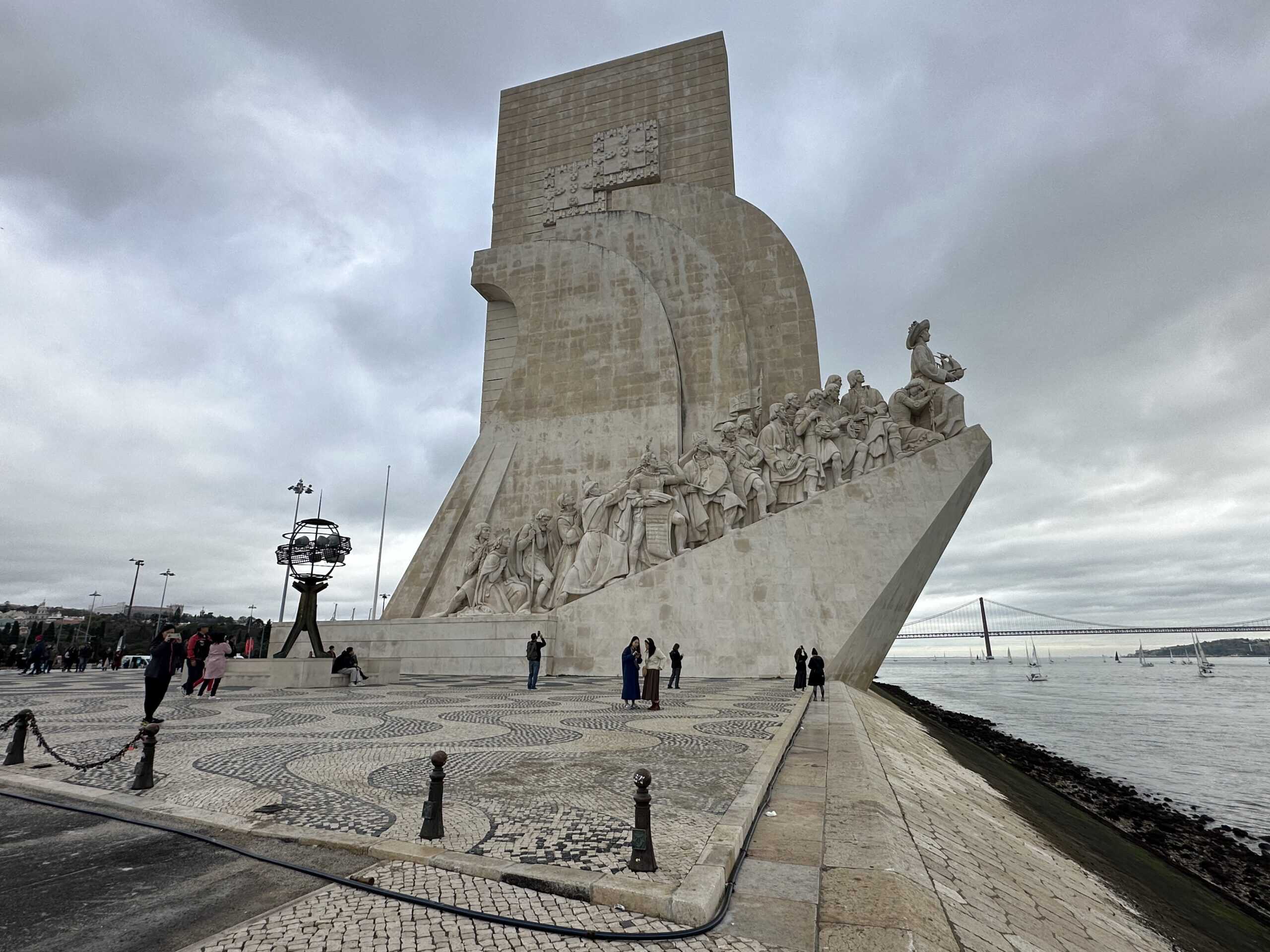
The monument celebrates the Portuguese Age of Discovery of the fifteenth century.
The construction represents a Portuguese caravel and along the sides are depicted important Portuguese explorers and historical figures such as navigators, cartographers, colonizers, missionaries, warriors, writers, kings and queens.
There are statues of the four navigators who completed the most famous feats:
- Bartholomew Diaz who was the first to reach the Cape of Good Hope
- Vasco de Gama who with a two-year journey managed to open the route to the Indies
- Pedro Álvares Cabral to whom we owe the discovery of Brazil
- Ferdinand Magellan the first European to sail in the Pacific Ocean
The largest statue is that of the Infante Dom Enrique, known as Henry the Navigator, at the bow of the caravel, emblematically reaching out towards the unknown represented by the open sea.
The statue of Henry the Navigator is 9 meters high while the other statues in the group are 7 meters high.
It is located near the estuary of the Tagus River, a place where in the past the caravels of brave sailors and explorers departed.
It was built for the 1940 Universal Exhibition held in Lisbon. The initial structure was made of wood and plaster and was only to be a temporary structure ready to be dismantled at the end of the event.
In 1960, however, the monument was built in stone and concrete to commemorate the 500th anniversary of the death of Henry the Navigator, one of Portugal’s greatest navigators who discovered the islands of Madeira, the Azores and Cape Verde.
In the nearby square there is the Compass Rose with the planisphere. Decorated in 1960, it is also a tribute to the golden age of Portuguese discoveries.

















